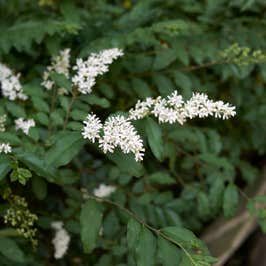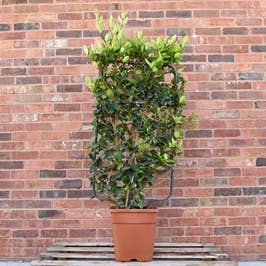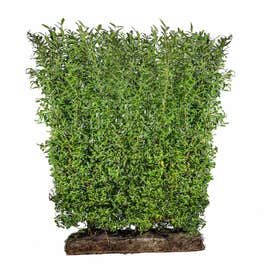How fast does privet grow?
Confused by privet hedge growth rates? Wondering, how tall does a privet hedge grow? Use the table below to help understand privet hedge height.
How to use Privet Hedging
Privet hedging is ideal for so many situations where it can be used as a fast growing hedge for screening and to use as a windbreak. It is often planted in urban areas, as it is pollution tolerant and is popular for shaping into sweeping arches or creating topiary shapes. The only instance in which Privet hedging is not a good choice is around paddocks or farm land, as the foliage is known to be poisonous to horses. Take a look at our full range of hedging plants for alternate options in this situation.
How far apart do you plant privet hedge plants?
Privet hedge planting distance is dependent on many factors, such as your budget, the size of plants and your level of patience! Each of our privet product pages – Common Privet, Wild Privet and Golden Privet show a suggested planting density range e.g. 5-7 per metre, to help you decide on spacing.
If we look at golden privet hedge spacing as an example, we offer various plant sizes; 2-4 litre pots will suit a planting density of 3-5 plants per metre, as will bare root plants. The large troughs we supply will be best planted at 1 per metre. Smaller bare root plants could be planted in a zig-zag fashion also to create a denser hedge. The choice is ultimately yours, but for more advice on planting density see the individual product pages or contact our sales and service team.
When to trim Privet hedge plants
Our privet hedge pruning time advice is applicable to Common Privet, Wild Privet and Golden Privet hedging. For more on Privet hedge care and privet hedge diseases see our help and advice section.
Privet hedge pruning first year for young plants
If your new hedge is made up of young plants then the first springs prune is an important one. All young plants should be cut back to 15-20cm (6-8inches) above ground level in early spring. Then for every 30cm (1 foot) of new growth remove 15cm (6inches), continue this practice until late summer when pruning should be left until the following spring to avoid damaging plants.
Maintenance pruning an established privet hedge
For informal privet hedges once a year in the spring remove 1/3 of the longest stems and shorten the remaining stems by 1/3.
More formal hedging should be sheared a few times a year from early spring to late summer, removing approximately 15cm (6inches) of growth.
Privet hedge pruning hard
Sometimes a renovation prune is the only way to bring a tired, old privet hedge back to a lush, bushy boundary. In late winter cut the whole hedge back to 15-25cm (6-30inches), the established root system will ensure that new growth is produced quickly so your hedge will be back to a good height within a year or so.
Privet hedge pruning tips
When shaping your established privet hedge aim to have slightly sloping sides with the top of the hedge being the narrowest. This will ensure that the bottom of the hedge gets enough light and will prevent leaf-drop.
Privet hedging and wildlife
Not just a pretty face, Privet hedging offers sustenance to birds and bees. Honey bees and bumble bees visit Privit for its nectar, whilst birds will enjoy the berries and seek shelter within the foliage, amongst them Blackbirds, Thrushes and Waxwings. Privet doesn’t need to be a formal hedge, allow it to grow more naturally to maximise the flowers and berries for your garden visitors.
Privet hedge plants in medicine
Though we wouldn’t recommend ingesting Privet hedging as you may find it results in an upset tummy, the leaves and bark of Privet hedging have been used for years for medicinal purposes.
It can be used in a decoction (mashing then boiling in water) to treat chapped lips and sore throats, amongst other things. The foliage can also be used to make a herbal tea which is said to improve the appetite of chemotherapy patients.







